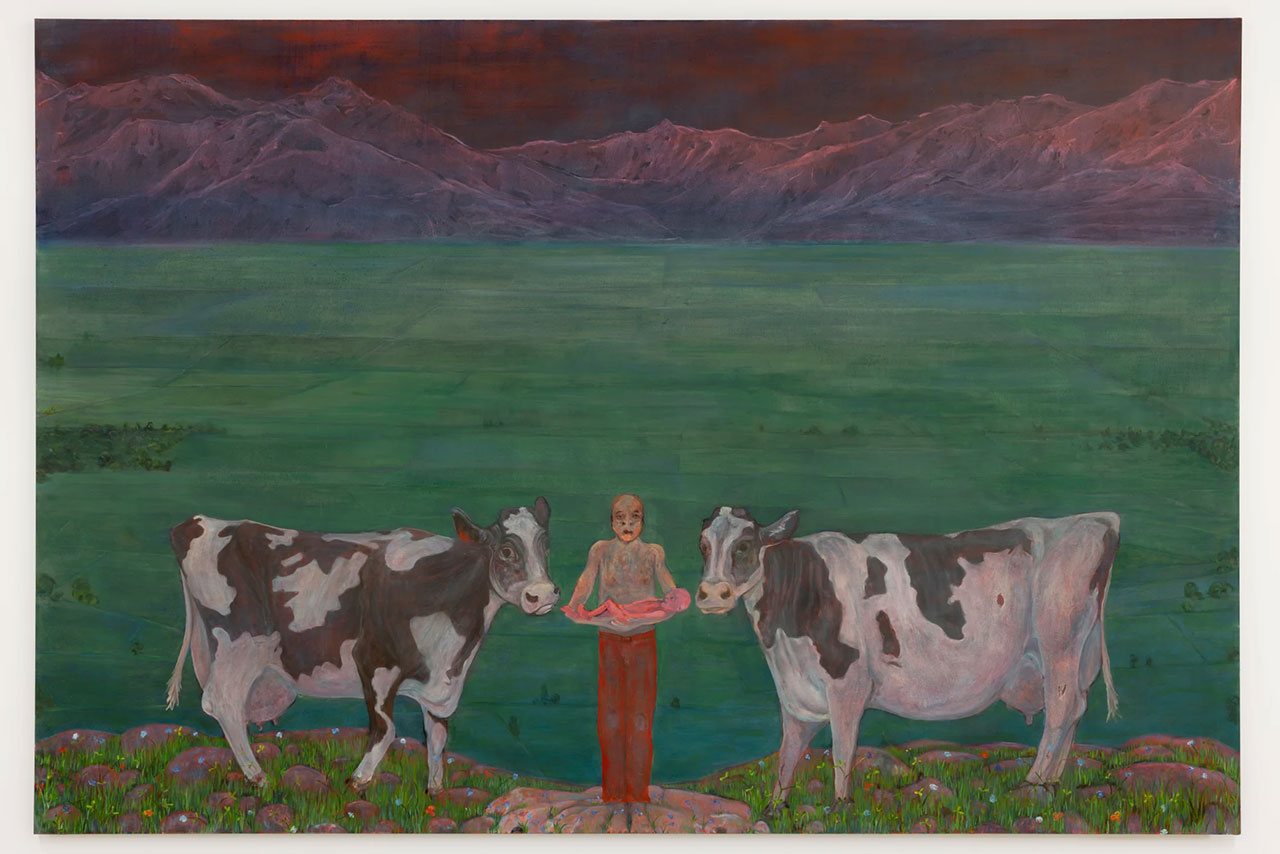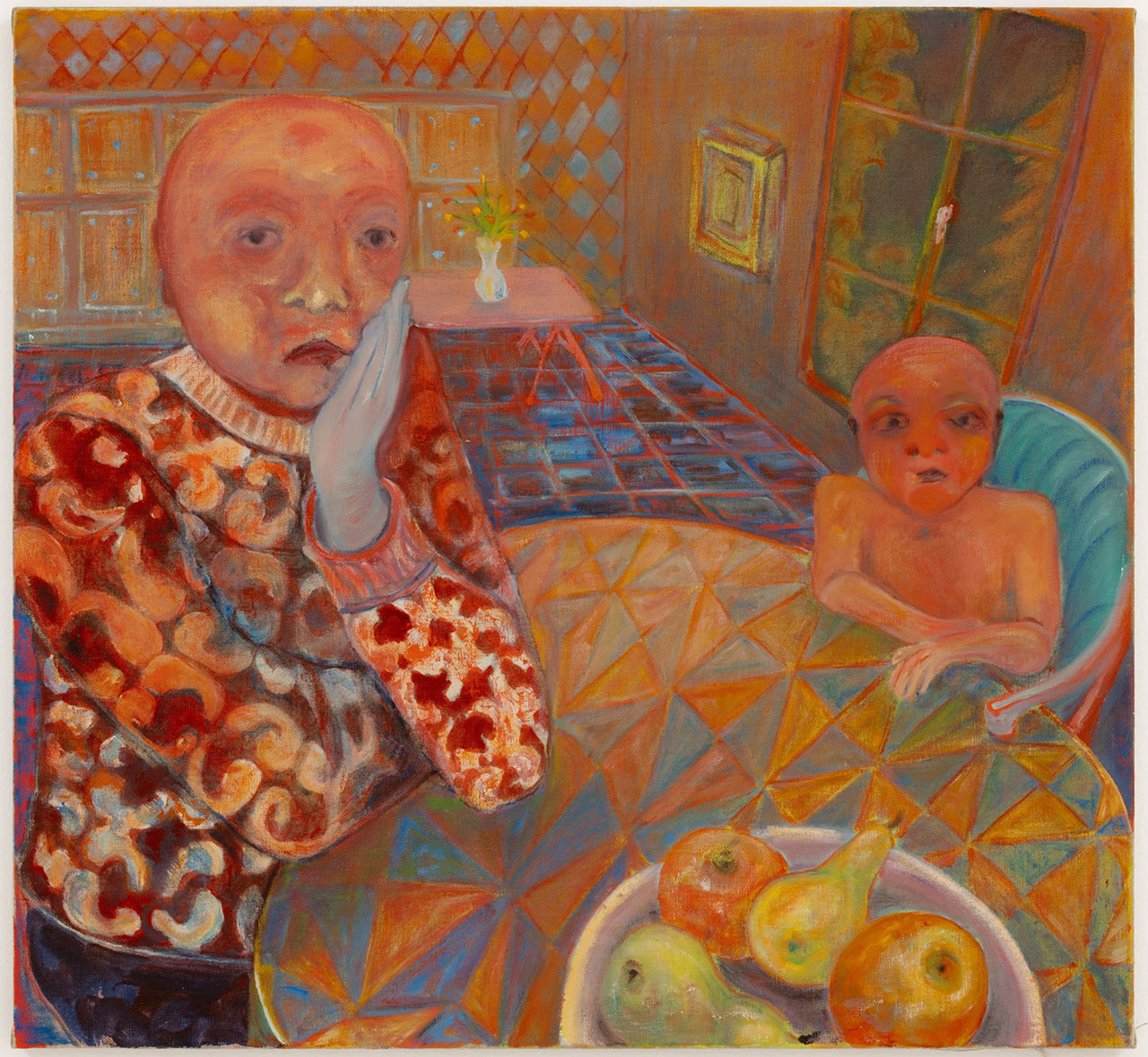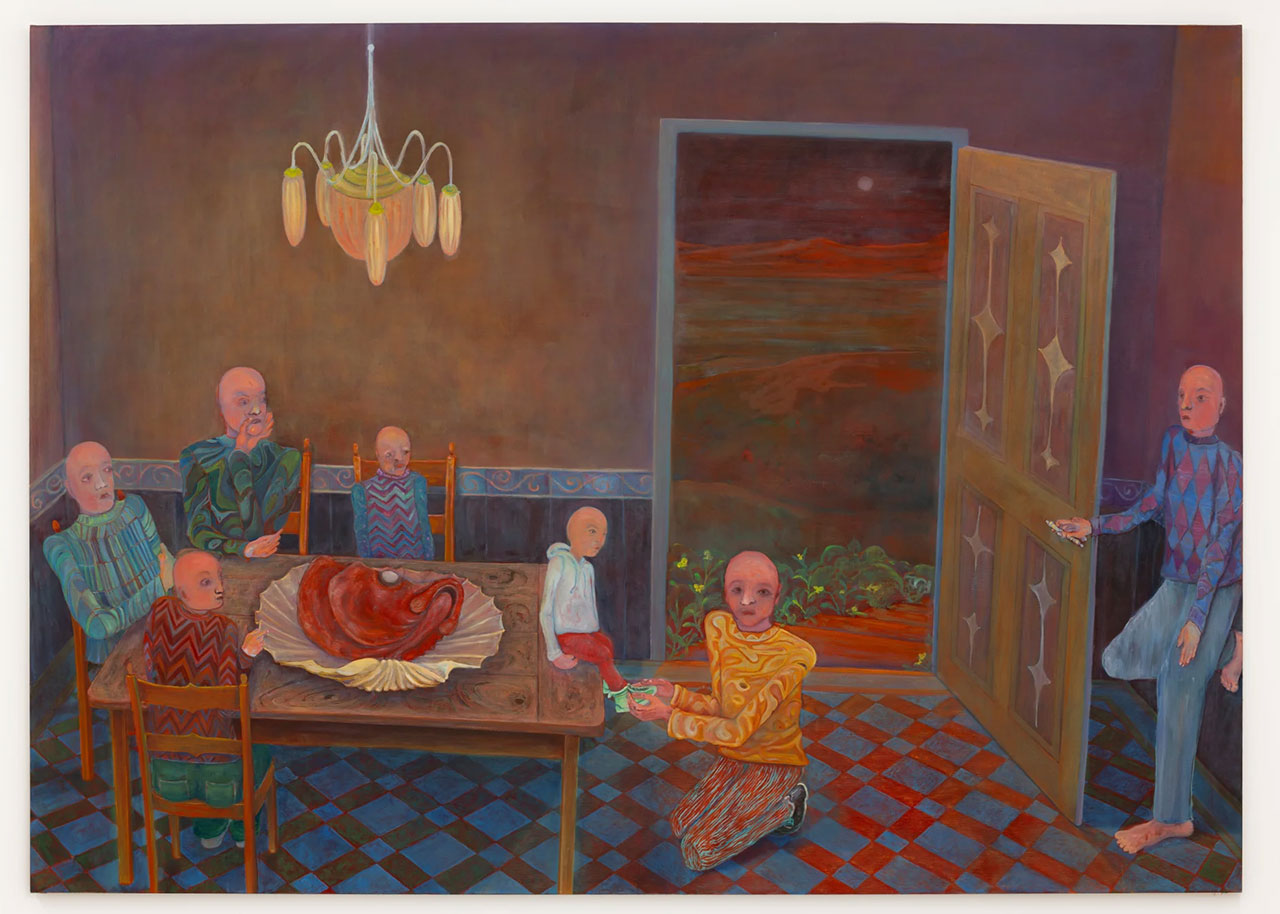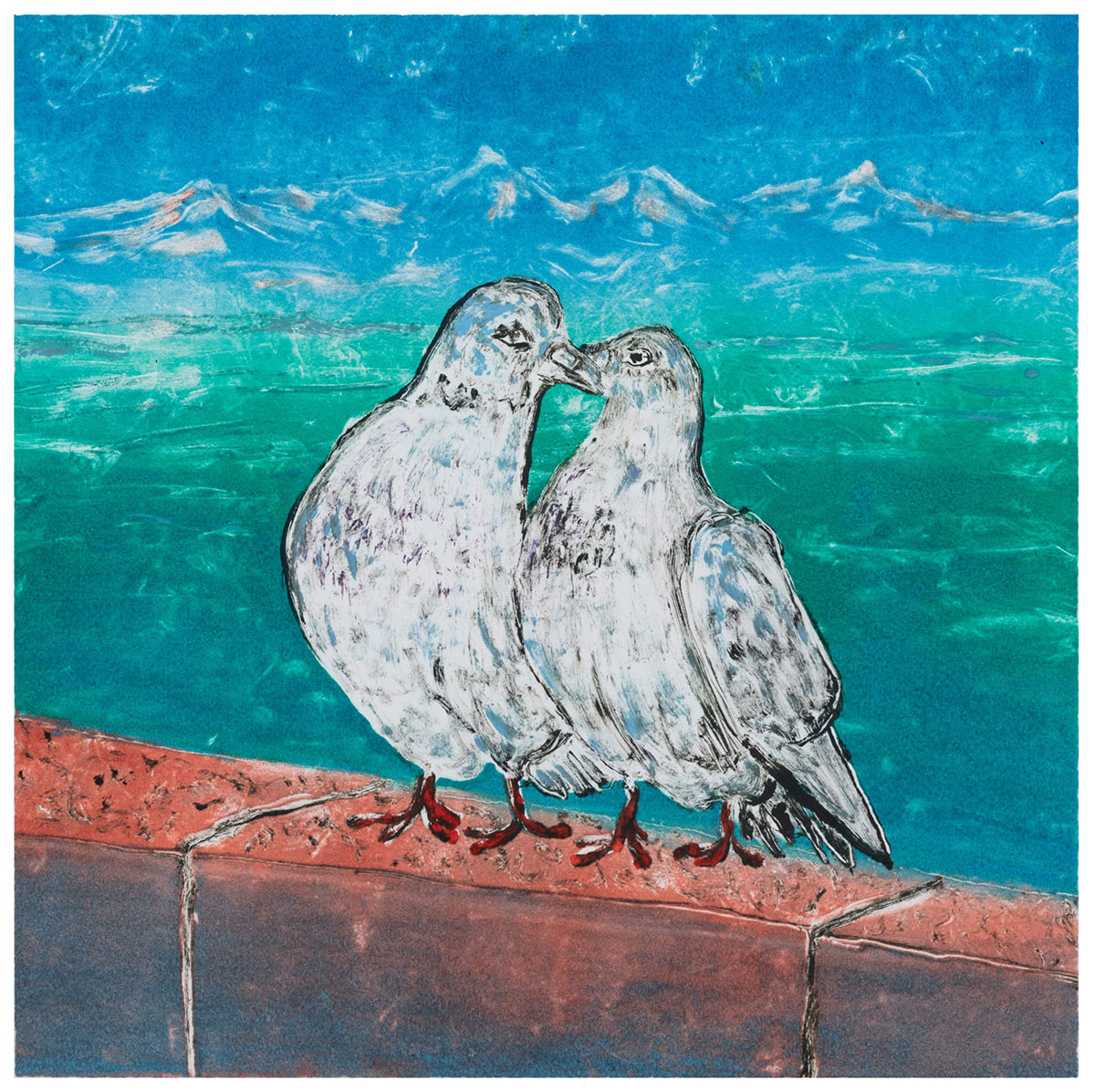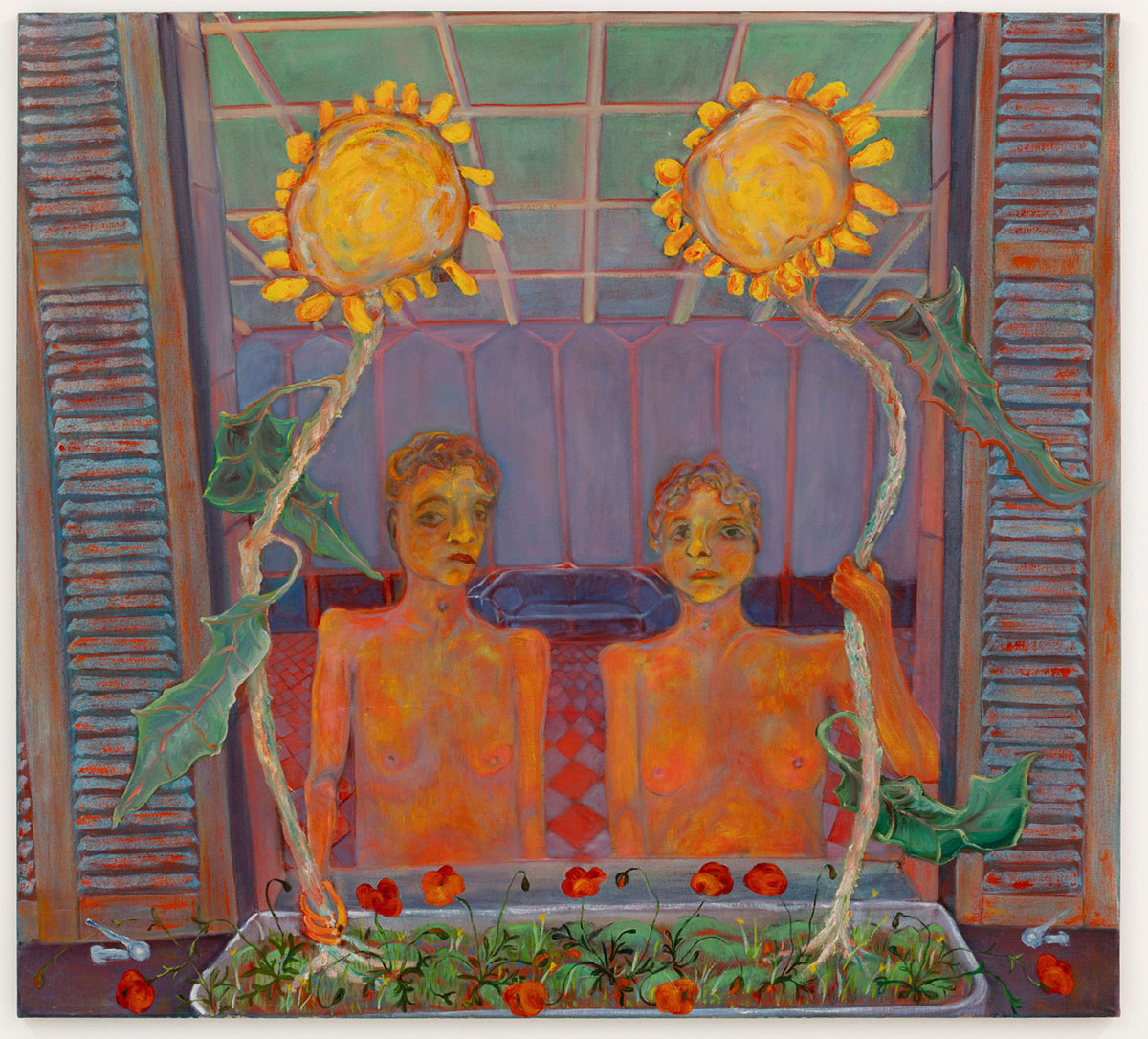PRESENTATION: Andriu Deplazes-Plaines en Jachère
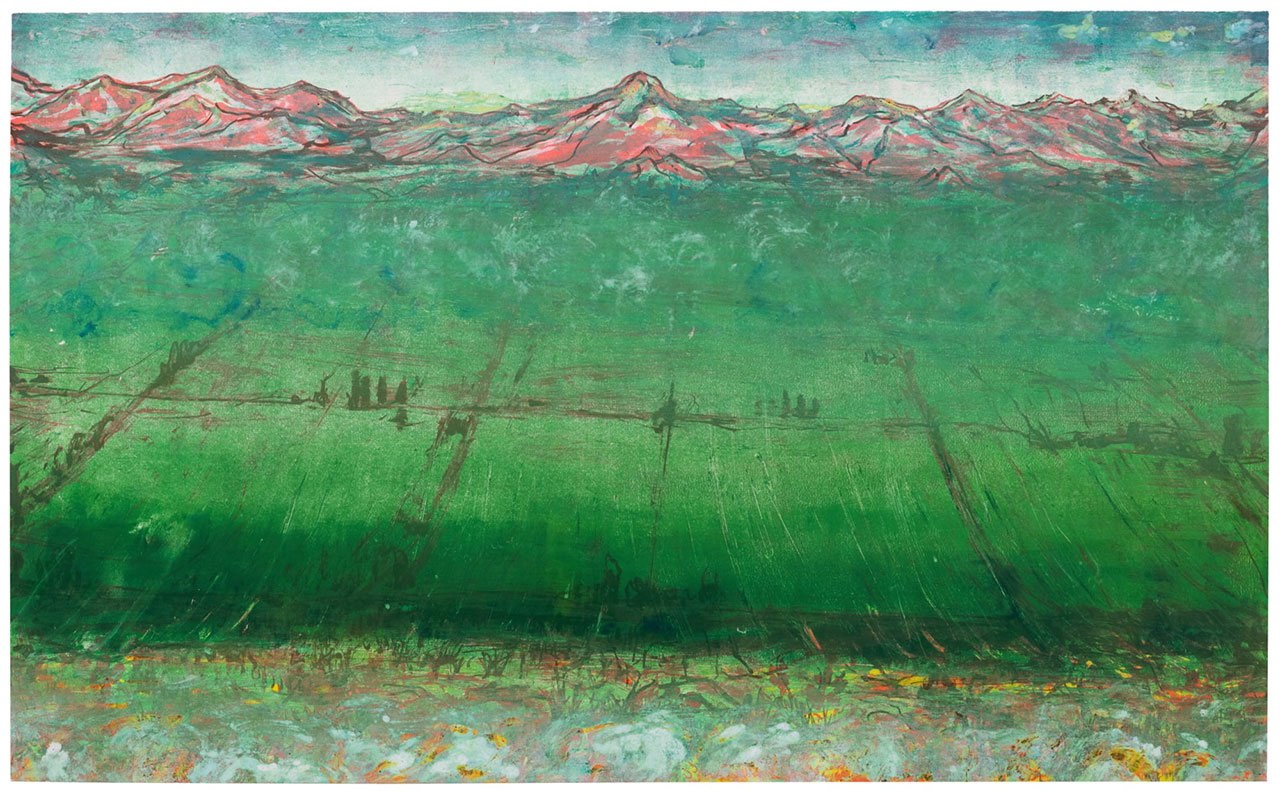 Andriu Deplazes’ paintings create a kind of parallel cosmos that questions the habitual ways of seeing and expectations of the beholder. Wide landscapes in colourfully powerful large format are the setting for curious characters who sometimes melt into the vegetation around them or appear strangely remote from it. The artist depicts androgynous beings exhibiting unconditional lust, allowing them to lose themselves free of moral conventions.
Andriu Deplazes’ paintings create a kind of parallel cosmos that questions the habitual ways of seeing and expectations of the beholder. Wide landscapes in colourfully powerful large format are the setting for curious characters who sometimes melt into the vegetation around them or appear strangely remote from it. The artist depicts androgynous beings exhibiting unconditional lust, allowing them to lose themselves free of moral conventions.
By Dimitris Lempesis
Photo: Galerie Peter Kilchmann Archive
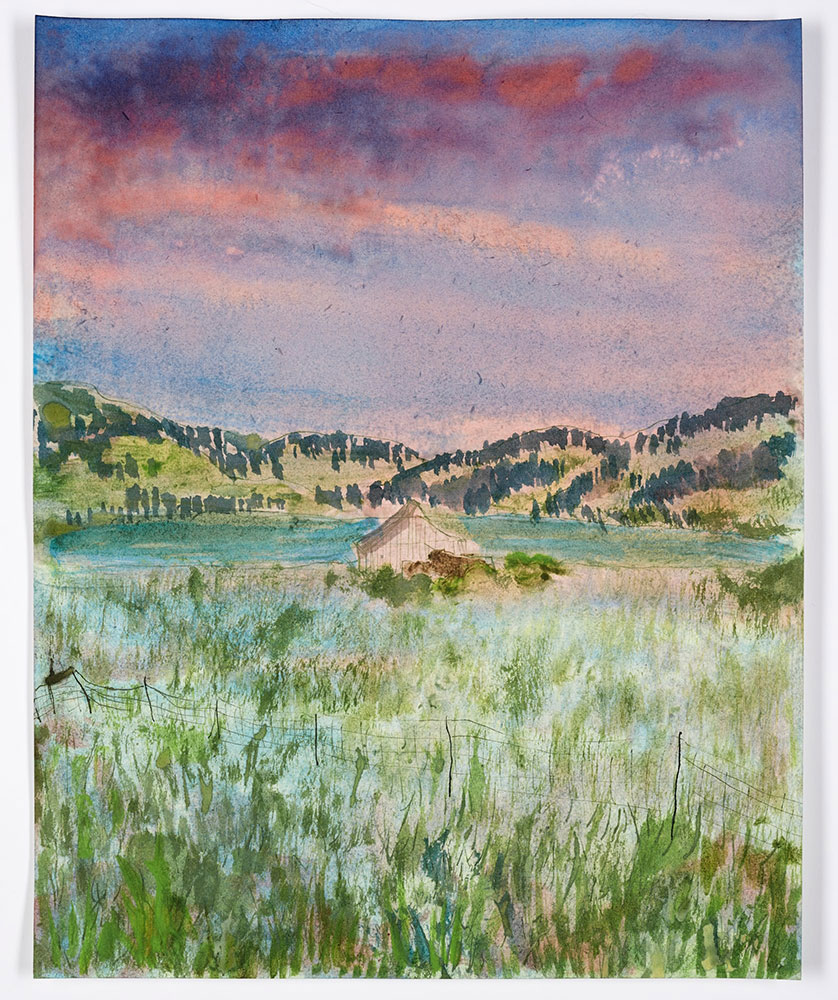
Andriu Deplazes in his solo exhibition “Plaines en Jachère” presents thirty works and is an opportunity for Deplazes to expand his formal and conceptual approach to painting. By dealing with various media with which he is familiar, such as painting, drawing, and monotype, he demonstrates great maturity for his age and a clear sense and awareness of the application of style. Established mannerisms from the parallelism and symbolism of Ferdinand Hodler to the rebellious aesthetics of Pierre Bonnard, Käthe Kollwitz, and, more recently, Willem de Kooning and Nancy Spero; are translated into a contemporary visual language that prioritizes the fluorescent colors often used by the artist. The exhibition puts a spotlight on complex themes such as death, war, excessive agriculture, intra-family interactions, life – which, in the artist’s view continues even when resources are lacking – nature that we must preserve, that gives us life but can also take it away from us. Andriu Deplazes’ painting is deeply ethical. In other words: it confronts the subject with the limits of his own actions. Reality appears both gentle and violent in its tireless expression. In the new series of paintings, the artist approaches more personal and specific themes. Open horizons have been replaced by specific situations, creating an emotional and philosophical responsibility towards what is depicted. By using a low perspective, Deplazes emphasizes the deliberately enigmatic nature of the moments depicted. Everything is literally in front of our eyes. In the show window of the gallery, works on paper with military musicians guard the entrance to the exhibition. As symbols of creativity that unfolds through coercion and protection, these pompous giants have conquered the fields. In them, as within the entire exhibition, the materiality of color repeats the density of the present mannerisms. In Deplazes’ visual style, everything is “watery”, “liquid”, or rather “viscous”. The organic nature of the paintings brings us closer to the social reality depicted by establishing an empathetic relationship with them. The visceral and organic images reinforce the connection between life and death, fertility and desolation: at the heart of apparent barrenness, hope blossoms into a subtle force, like a dormant seed. Further into the exhibition, we gradually sink into a more intimate visual experience. To our right, we pass Marseille and its dilapidated walls, where the daily violence is tempered by the warm color palate of dawn. We then view works with the landscapes that have been most weakened by the climate crisis. On the Left: Homeless people sit on doorsteps, cows in the barn are inseminated, a family gathers at their eldest’s bedside, and a bathroom with women in labor. All point to the critical boundary between conservation and survival. The faces in Deplazes’ paintings reflect fear and introspection. Their discomfort is palpable: they lack any symmetry and their bodies have the awkwardness of people who don’t know how to pose in front of a lens. Deplazes’ works are about the energy of confrontation: we show what repels us by repeatedly challenging the viewer with a warning look. In fact, social realities are reconstructed using purely visual means: his animated bodies unfold more than characters. Deplazes maintains a performative relationship with the canvas in which expressionism highlights the fragility of all things and in which, paradoxically, delicate lines serve to represent the violence of a situation. The focus of the work is the flow that connects the different image typologies (portrait, landscape, genre scene). This irregular flow sometimes condenses at strategic points, producing bursts of vitality that manifest themselves in the form of dynamic outcroppings: magmatic clumps at the joints of bodies or between the steep folds of barren plains.
Photo: Andriu Deplazes, Grünliche Weite (Greenish vastness), 2023, Oil on paper (monotype), 64.5 x 100.5 cm, (25 ½ x 39 ½ in.), 73 x 113.5 cm (28 ¾ x 44 ¾ in.), framed, © Andriu Deplazes, Courtesy the artist and Galerie Peter Kilchmann
Info: Galerie Peter Kilchmann, 11-13 rue des Arquebusiers, Paris, France, Duration: 14/10-16/12/2023, Days & Hours: Tue-Sat 11:00-19:00, www.peterkilchmann.com/
